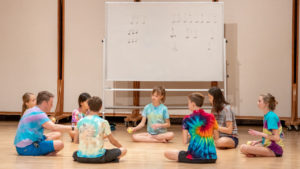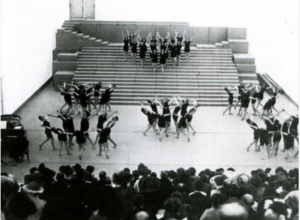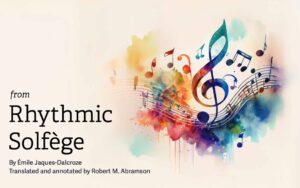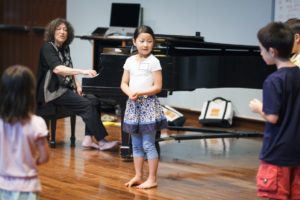Posts Tagged ‘Pedagogy’
The DALCROZE LAB returns!
Have you ever watched a DALCROZE LAB? This is a virtual forum provided by the Dalcroze Society of America for educators to explore Dalcroze Education. It offers both live seminars and on-demand recordings of past presentations. These resources allow participants to delve into the principles, pedagogy, and techniques of Dalcroze education, including workshops, Q&A sessions, and study discussions. In…
Read MoreLesson Plan for 3rd-5th graders
This is a lesson plan I might use in the beginning of the year in a community music school. Where I teach, some students will be brand new to music lessons and Dalcroze, some will be experienced at both, but most will be in between. I try to plan activities that will allow me to…
Read MoreAre You Familiar with the T2 Program?
Have you ever heard of the T2 Program? If not, this article will familiarize you with an outline of this important document which is shaping the future of Dalcroze teacher training in the United States. The T2 program, which symbolizes the two Ts in Teacher Training (and is sometimes pronounced as T-squared and other times…
Read MoreRhythmic Solfège
Translated by Robert M. Abramson Foreword Rhythmic solfège is not in competition with other systems of solfège. It is a complement to them, and an indispensable one. In fact, in the better treatises on the subject, classical or modern, the exercises are given with the sole intention of teaching the laws of pitch and meter,…
Read MoreThe Follow: A Reaction of Nuance
The follow is a uniquely American Dalcroze teaching strategy and combines elements of association, dissociation, improvisation, and group exercise. Here, Leslie Upchurch describes the elements that comprise a follow activity, as well as several examples of how to use the follow when teaching students of various ages. My first Dalcroze eurhythmics experience was as a…
Read MoreImprovisation in the Dalcroze Classroom
Along with eurhythmics and solfège, improvisation is one part of Jaques-Dalcroze’s tripartite description of his system of music education. Often associated with on-the-spot instrumental creations, Michael Joviala illuminates how this subject reaches beyond the instrument, the exercise, and the notes. In this article, you will find diverse manifestations of improvisation within a teaching environment, as…
Read MoreGroup Activities in the Dalcroze Lesson
Perhaps the most enduring negative side effects of the recent pandemic were caused by the social isolation. Families were segregated during illnesses, schoolchildren were separated from their peers, and communities suffered permanent losses of their members. I found myself missing even the most basic, mundane tasks like grocery shopping, taking my children to local playgrounds,…
Read MoreLesson Plan: Dalcroze with Ages 3-6
Overview This is a lesson adaptable for ages 3 to 6, mid-semester. The subject is Phrase & Form. This lesson is centered around the song “The Birdies Fly Away” (adapted from Humperdinck’s “Hänsel und Gretel”). The musical goals include: The materials one needs for this class includes: Lesson Sequence Opening Circle 1. Trace rainbows in…
Read MoreDalcroze Education for Youth: Subcommittee Update
Current Work The Dalcroze Education for Youth Subcommittee is comprised of members of the DSA’s Professional Development Committee. We (Adriana Ausch, Jeremy Dittus, Leslie Upchurch, and myself) have been meeting to discuss and organize common goals for Dalcroze students in the 4-7 year old age range. While our meetings began a few years ago with…
Read MoreSpatial Orientation and Awareness
For many years of my own eurhythmics practice, I focused mostly on trying to coordinate my arms and legs through ever more complicated rhythms. Only recently have I become entranced by one of the very things that makes movement possible—space. It seems obvious: How can you move if you are not aware of the space…
Read More








